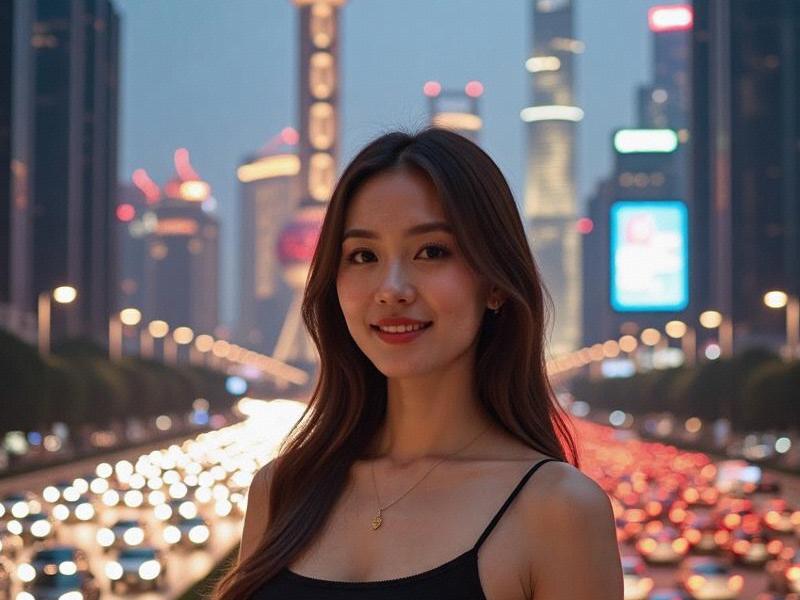This investigative feature explores how Shanghai maintains its cultural soul while racing toward a tech-driven future, creating what urban theorists call "the most compelling city model of the 21st century."

The Shanghai Dichotomy: Preserving History While Building Tomorrow
From the 32nd floor observation deck of the newly completed Shanghai Tower II, urban anthropologist Dr. Elena Martinez gestures toward the Huangpu River's serpentine flow. "That bend," she notes, "perfectly symbolizes Shanghai's dual nature - the graceful curve of tradition meeting the straight lines of progress." Below us, 18th-century shikumen lane houses neighbor quantum computing labs, while across the river, a restored 1930s jazz bar shares a wall with a blockchain incubator.
Architectural Time Machine
Shanghai's skyline tells its developmental story in concrete and glass:
- The Bund's colonial edifices (1920s)
- Pudong's financial towers (1990s-2010s)
- The "Vertical Forest" residential complex (2023)
- Underwater data center (scheduled 2026)
What astonishes urban planners isn't the growth pace - it's the preservation ratio. Despite adding 58 million sqm of new construction since 2020, the city has:
- Protected 94% of heritage-listed buildings
- Digitally archived 12,000 "disappeared" lanes via VR
- Created 48 heritage innovation zones where old structures house tech startups
爱上海419论坛 The Silicon Bund Phenomenon
The historic Bund now anchors China's fintech revolution:
- 72% of Asia's blockchain patents originate here
- AI-powered "smart contracts" drafted in art deco offices
- Traditional tea houses host crypto exchanges
Fintech pioneer James Guo explains: "We drink from both cups - the bitter tea of risk and the sweet tea of tradition." His startup, housed in a former British bank, uses AI to predict market trends but keeps abacus beads on every desk.
The Green Metropolis Initiative
Shanghai's environmental strategy combines ancient wisdom with cutting-edge tech:
- 650 km² urban forest (exceeds NYC's Central Park 200x)
- Solar-paneled ancient-style roof tiles
- AI-controlled Suzhou Creek purification system
- "Breathing buildings" with algae-based air filters
上海贵族宝贝自荐419
Ecological designer Li Wen showcases a park where drones plant trees following 11th-century landscape principles. "We call it 'algorithms meet feng shui'," she smiles.
Cultural Code-Switching
Nowhere is Shanghai's duality more vivid than in its cultural scene:
- The Shanghai Symphony performs with holographic conductors
- Museums use AR to "resurrect" painted scroll characters
- Young rappers sample 1930s "yellow music" jazz records
Curator Fang Yue sees this as natural evolution: "Shanghai has always been China's cultural blender. Today we just have more ingredients."
The Human Mosaic
Demographic data reveals surprising patterns:
- 38% expat retention rate (highest in mainland China)
上海贵人论坛 - 72% of residents bilingual
- "Flexi-cuisine" diets combining local breakfasts with global flavors
French chef Antoine Dubois, who runs a xiaolongbao-Macaron fusion restaurant, observes: "Shanghai tastes like the future - familiar yet constantly surprising."
Challenges on the Horizon
The city faces growing pains:
- Housing affordability crisis (only 15% can afford city center)
- Digital divide in elderly populations
- Cultural homogenization fears
- Rising sea level threats
Yet as Mayor Gong Zheng recently declared: "Shanghai doesn't solve problems - it reinvents the context so they cease to exist."
The 2040 masterplan envisions a "phygital" city where holographic shopkeepers greet you in reconstructed alleyways, and your AI assistant knows your great-grandmother's favorite soup recipe. In this future - already emerging along Shaanxi Road's smart pavement - Shanghai won't just be China's New York. It will be the world's first city that's simultaneously a museum, a lab, and a living manifesto for urban possibility.